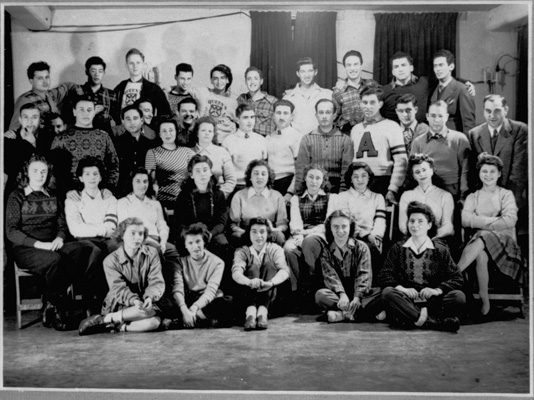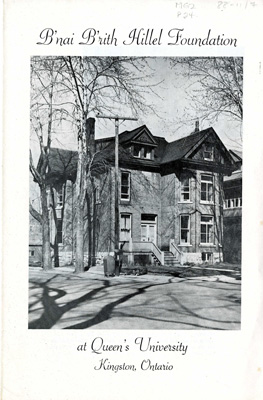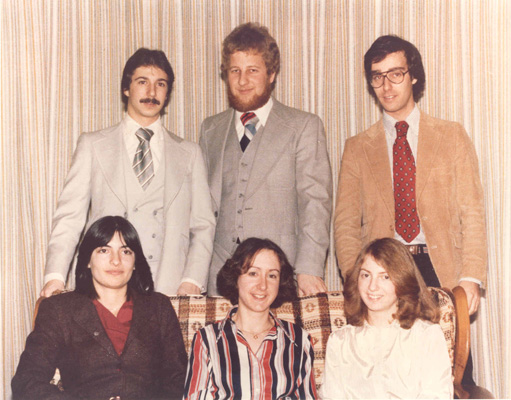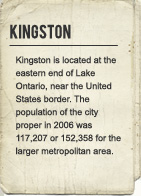Queen's Hillel
One of B'nai Brith's most important involvements was in establishing a Hillel Foundation to serve the religious and social needs of Jewish students at Queen's. The number of Jewish students there had grown since the late 1920s, when McGill began unofficially instituting quotas by holding Jews to higher admission standards than the other students. The inauguration of Queen's Hillel in 1940 made it the first in Canada.
Ben Zion Steindel was Kingston's first Hillel rabbi. He arrived in 1941, having graduated from the Reform seminary in Cincinnati two years earlier. The following year, Steindel was replaced by Rabbi Gilbert Klaperman, who launched a student newspaper, organized animated debates and discussions as well as religious and social activities before moving on to in the University of Iowa in 1943. Like the rabbis who followed him for the next fifteen years, half of Klaperman's salary was paid by the National Hillel Commission. The other half was paid by Beth Israel. Rabbis Klaperman (1942-43), Gelman (1943-44), Renov (1944-48), Pimontel (1948-55) and Bassan (1956-62) all served both Hillel and Beth Israel. Part way through Rabbi Bassan's term, the synagogue was able to hire Rabbi Karpol Bender, to serve solely its own needs.
In 1944, Hillel was officially recognized by Queen's and in the same year the Jewish Community Council of Kingston voted in favour of accepting the student organization as a member. In 1945, the organization dedicated its own building at 26 Barrie Street. Hillel became known and respected for the services it offered to Jewish students and for its interfaith work, inaugurated in the mid 1940s by Rabbi Renov. The first president of Queen's Hillel was Alfred Bader, a Jewish war refugee who was grateful to be admitted to Queen's, after being turned away by other universities because of their quota systems.
During the war years, the student newspaper, The Hillel Scroll, sensitized and animated its readers by reporting on the fate of Jewish youth in ghettos and labour camps in Europe. In the 1950s, Rabbi Jacob Bassan aimed to use Queen's Hillel as a drawing card to attract more Jewish students to the university. He published a four page brochure with photographs showing the Barrie Street facilities including dining room, music room, reading room and library, letting the parents of prospective students know that their children would find a "home away from home" on campus. Over time, Hillel House became an all-round community centre for Kingston's Jews as well as the focus for Jewish students who attended Queen's. At different times, Talmud Torah classes met there and children from the community joined with their parents in celebrating Succot, Purim and Hanukkah. Other community groups, such as Hadassah-WIZO and Young Judaea, also availed themselves of Hillel House and its facilities.











